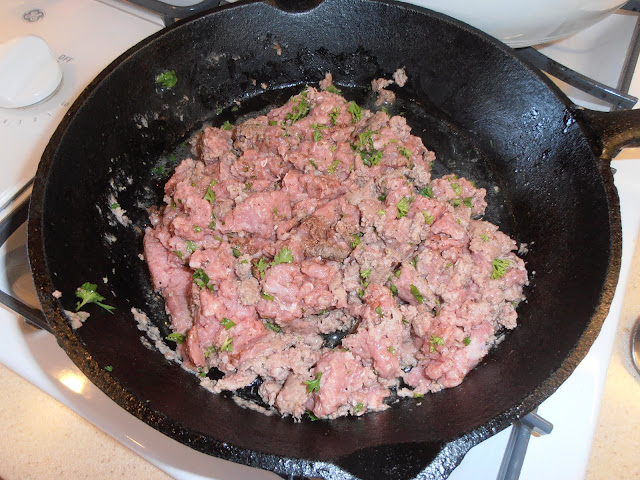I revisited a book I have used before, Flower Cookery -- The Art of Cooking with Flowers.
 |
| No ISBN; the Library of Congress Number is 67-24072 |
I feel very strongly that Ms. MacNicol did not test all these recipes; rather her goal was to gather them into one volume. She cites her sources in many cases.
There are seven pages of recipes for the elder flowers and berries. Jam, wine, fritters, vinegar, pickled buds, sauces, ices, even pancakes.
The one that caught my attention is on page 57 and is listed as
Elder Flower Water, "Frontignac"
When elders are in flower gather them on a dry day. They should be in full but fresh blossom. Put the flowers in a preserving pan with sufficient water to cover them, and boil for 1/2 hour. Then strain through a fine sieve, or woolen bag, and let it stand. When cold put again in the pan, and allow 1/2 lb. of sugar for each pint of the flavoured water. Boil 10 minutes, skimming well all the time.
When cold, bottle for use, corking the bottles tight and sealing them down.
For an ordinary shape of ice use a breakfastcupful of this syrup and make like any other ice, but use less sugar.
The Cookery Book of Lady Clark of Tillypronie
I thought it was interesting the recipe is called a "water", when it truly is a syrup. I thought waters were distilled and did not have sugar in them. But I learn new ideas all the time.
The name Tillypronie was amusing to me, so I decided to see if I could look it up and find out more about Lady Clark and her book. I was pleasantly surprised to find a lot about it.
Tillypronie is in Aberdeenshire, Scotland. You can read in detail about it here.
There are some pictures of the grounds and it is a gorgeous place to live.The house was originally built 150 years ago in 1867 by Sir John Clark, the diplomat son of Queen Victoria’s physician, Sir James Clark, who was himself the son of a butler from Banffshire.
I was more interested in Lady Clark, so here is what I learned about her:
Lady Clark was not just an exemplary hostess; she was also a highly accomplished cook. After her death in 1897, Sir John arranged for the thousands of recipes she had collected throughout her lifetime, and particularly during his diplomatic postings in Brussels, Paris and Turin, to be edited into a single volume which was published in 1909. Virginia Woolf gave the resulting book a glowing review in The Times Literary Supplement at the time.
It looks so interesting! I looked around the 'net and found a digital copy of her book (you can also buy print copies). Her recipe is found here, under the Ices category. Ms. MacNicol cited it word-for-word in her book.The book is considered a valuable compilation of Victorian era recipes. Lady Clark obtained the recipes by asking hostesses or cooks, and then testing each one at Tillypronie. She documented each recipe's source with the name of her source, and often also the date. There is comprehensive coverage of plain British cooking, especially of meat and game, but the book has sections on all aspects of contemporary cooking including bread, cakes, eggs, cooking for invalids, jams, pies, sauces, sweets (puddings) and vegetables. She had lived in Italy and France, and the cuisines of these countries are represented by many dishes, as is Anglo-Indian cooking with a section called "Curries".
My Notes
Elderflowers, sugar, and water are all that are needed here. Here are my flowers:

That is how many I picked. Here is what was left after I removed most of the stems:

"Water to cover" meant they were floating a little off the bottom, but not too much. I measured 8 cups.

When the water got hot, the flowers and water darkened. After it reached a boil, I turned down the heat and let it simmer for 30 minutes.

I used a coarse strainer first to get out the flowers and stems. Then I poured it through a fine strainer to get out the small particles.
It measured 6 cups (3 pints). I let it cool for a few hours.
Three pints meant 1 1/2 pounds sugar, which I weighed and then added to the liquid. I heated it to a boil, stirring to dissolve all the sugar, then set it to a slow boil for 10 minutes. I did not stir it and there was nothing to skim.
Once that cooled down, I bottled it. I measured 5 1/4 cups syrup. They are stored in the refrigerator.
The Verdict

Sweet, but not too sweet. Flavorful and if you don't know what elderflowers taste like, I think it is hard to describe. Floral but not perfumy, light and yet enticing.
I enjoyed sipping it from a spoon and putting some in my tea.
I had some leftover pie crust so I rolled that into strips, baked them, and then brushed them with the syrup (three times) while they were still hot. I served them cool, with an unbrushed crust for a taste comparison. The flavor was enhanced by the syrup but it was very subtle.

I also put together a simple dessert of sliced oranges and fresh strawberries, and drizzled a little of the syrup over them. That was tasty.
Recently I was looking at a recipe for Roman honey cakes, made of cheese and flour and an egg, baked, then soaked in honey. I think this syrup would be good to use instead of honey, too. I don't have much honey in my pantry, so it is worth a try.
Success! Worthwhile and perhaps I will try Lady Clark's suggestion to turn it into an ice.
What are you cooking?







